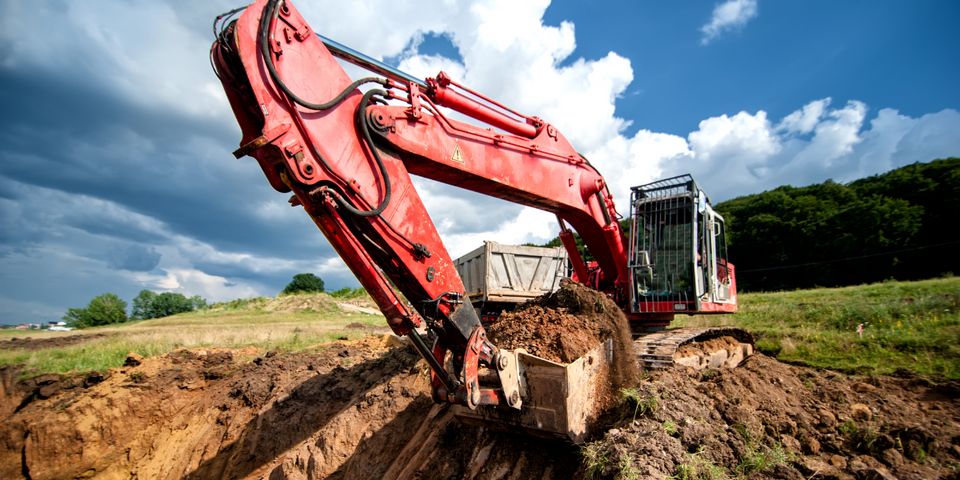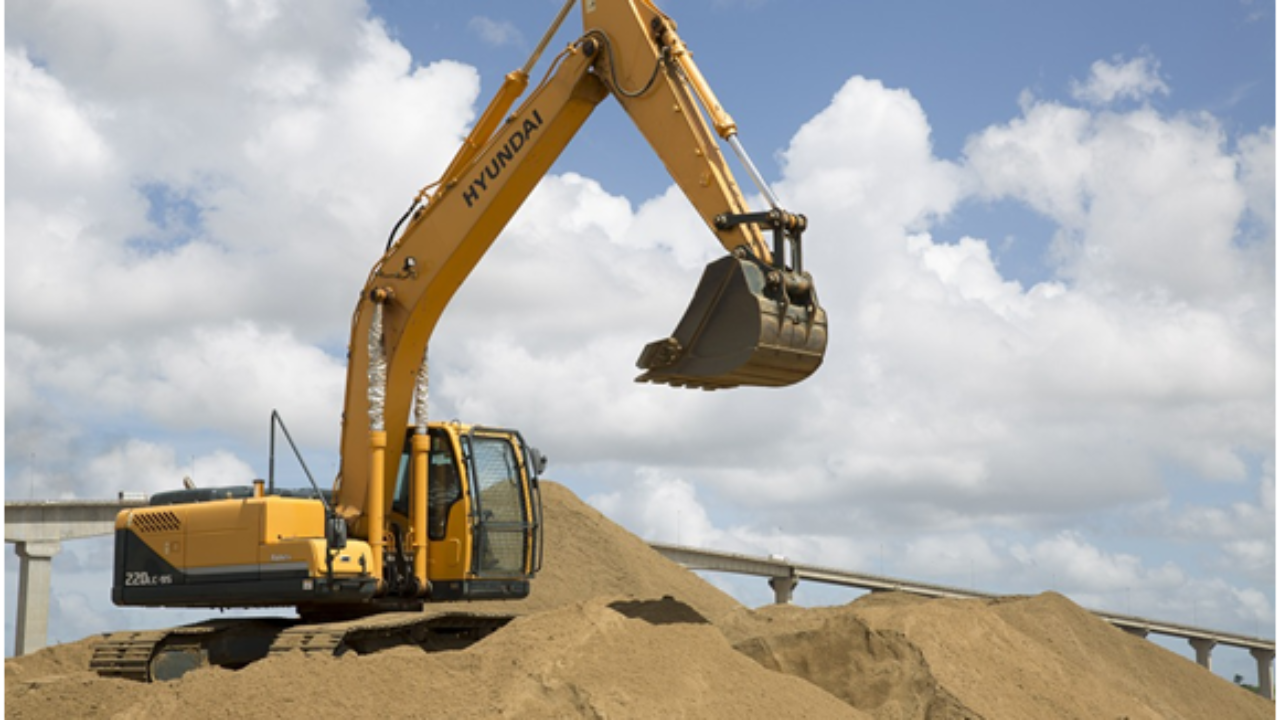7 Easy Facts About General Contractor Described
Wiki Article
Top Guidelines Of Trencher
Table of ContentsThe Basic Principles Of Trencher Some Known Facts About Excavation Companies.About Excavation CompaniesExcitement About TrencherIndicators on Trencher You Need To Know

Scrapers or Pans dig deep into dirt in one area, haul and also dispose the soil in an additional spot (demolition). It is difficult to match the effectiveness of scrapes for cut/fill dirt procedure if the haul range is less then a mile. Scrapers are usually drawn by a rubber tire wheel tractor and also are sometimes pressed via the cut area by a bulldozer.
There are often times that scrapers are not made use of for site grading and a dump truck is employed: the haul may be to long, the haul might cross roads where scrapes are not permitted, acid rock might be experienced, equipment schedule, etc. Dump trucks remain in common use and also possibly call for little discussion.
"Rock body" beds, on the other hand, have no tailgates and can discard any type of dimension rock, although their quantity capacity is reduced. Compaction Devices raises the density of the dirt and in some cases gives a smooth, rolled surface area.
3 Simple Techniques For Excavating Contractors
From a straightforward test pit to percussion drilling to core drilling the proprietor has significantly a lot more costly choices that produce increasingly far better data about the site underground. As an example, the Owner on a 100,000 SF structure task may authorize twenty monotonous locations with split spoon soil samples taken till rock is reached and afterwards core examples of rock.Recognizing the type and also top quality of rock (from the core examples) and also place of rock (from the soils boring) is a real benefit in jobsite preparation. On the other hand, the Owner of a 100,000 SF structure might choose to wage no geotechnical screening whatsoever. The choice regarding geotechnical screening is normally made by a Proprietor without input from the Construction Supervisor.
An expertise of the approximate place of the rock aids the Construction Supervisor to intend the series of actions following rock excavation. If rock is in one edge of a large building project, for example, the planet excavation can start at the contrary end of the structure in order to start structure job soonest.
Beginning the foundation work early would be a good concept if the rock can be removed by tearing. If the rock is exceptionally difficult and also calls for substantial blasting, it may be prudent to hold foundation work up until the blasting is completed. The Building and construction Manager must coordinate these types of decisions as well as utilize all the technological day available.
The Greatest Guide To Excavating Contractors
Unidentified excavation states that all rock or other unanticipated materials (excluding dangerous products) run into in the sitework will be the responsibility of the Contractor at no change in contract cost. An unclassified excavation is less complex from a book-keeping viewpoint as well as puts the responsibility for geotechnical problems onto the Sitework Contractor.It's amazing what a heavy rainfall check out here can do to my company a building task. Prior to the rain, the site might be dry, heavy devices efficiently relocating earth, the various other professions smoothly executing their job.
In a lot of areas of the globe, the Construction Manager should bear in mind a straightforward truth: IT WILL RAIN. Great preparation can lessen the damage and disturbance of a heavy rain to a jobsite. Typically the excavation and grading is entrusted to the Sitework Professional (and also their Foremen is liable to manage and also route the hefty devices and operators).
Therefore the Construction Manager should be continuously familiar with what rain will certainly do to the job site. It is not uncommon for the Sitework Supervisor to function their heavy equipment for optimal efficiency and also wish it doesn't rainfall. Among the most effective ways to prepare for rainfall is to incline all grades to drain and also to smooth rolled the surface area prior to a rainfall.
About Trencher
The Construction Supervisor must be far-sighted sufficient to guarantee that hefty rainfall does not quit working on the project longer than required. Daily conversations with Sitework Foremen might be required to achieve this goal. Any kind of time excavation is called for listed below the existing water table on a job, the procedure of dewatering must be read this considered.In a really cohesive soil, the water takes a trip so slowly through the clay or silt that dewatering is not normally essential for the fairly short time of excavation. Dewatering may be needed for a single footing excavation or for an entire job website. The most typical dewatering approaches are trench drains pipes, deep wells and well points.

Ground water infiltration can also be lowered by cutoff techniques such as sheet stacking. High dewatering costs have actually paled the revenue margins on much too numerous tasks.
This option must always be taken into consideration when evaluating the possibility of dewatering. Clearly the choice is just viable if gravity can run the water to reduced ground. Trench drains pipes can be cut with a backhoe and filled up with a crude, granular product (# 4 rock for instance), however treatment should be worked out in picking the water outlet kind and also location.
The Definitive Guide to Excavation Contractors Near Me
A siphon, necessarily, uses air pressure to carry water from one altitude, up over an obstacle, to a reduced altitude. The pipelines in a siphon system need to be impermeable and also some resourcefulness is frequently needed to entirely fill up the siphon pipe. The siphon pipe must be full for the siphon to start.A deep well consists of a pump, pipe and an upright well casing. The pump intake is at the base of the well casing (usually some crushed stone is positioned down there as a filter medium) (mini excavator). The water is inflated the pipe, out of the well housing, as well as to a suitable discharge place.
In a crude sand, for instance, a large area can be pumped to near the pump intake altitude. A less absorptive soil, on the other hand, minimizes the performance of a deep well. Considering that the pump is usually at the bottom of the deep well, there are no height limitations because of vacuum lift, and deep wells can lower the groundwater over 50 feet.
Under of the wellpoint there is a 2 foot long display and valve, water jets out of this valve and also creates a hole right into which the wellpoint pipe can be decreased. This opening is often made a larger diameter (as an example 10 inches) to permit a rugged sand backfill to assist filter the water (general contractor).
Report this wiki page